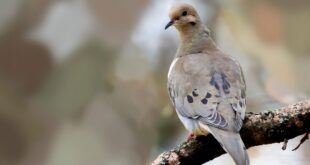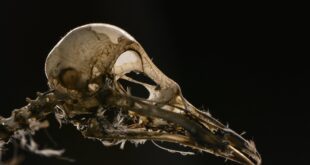There once was a blue bird with a red chest. It was very rare to see one, and people would often stop and stare at it in amazement whenever they did. Some even took pictures of it to show their friends. The bluebird was known for its beautiful plumage and unique coloring. Its blue feathers were so vibrant that they sparkled in the sunlight.
The bluebird also had a distinct red chest that made it stand out even more. People who encountered this blue bird with a red chest said it exuded an aura of peace, joy, and beauty. It was a sight to behold. They never tired of admiring it, and it soon became known as the blue bird with the red chest.
Is there a blue bird with a red or orange chest?

Yes! There are bluebirds with both red and orange chests. These bluebirds tend to be found in warmer climates, such as the southern parts of North America and Central America. They have a beautiful blue coloration that is often contrasted by their bright red or orange chests. Bluebirds with these colors can be seen flitting around garden areas throughout the happy bluebird watching!
Eastern bluebirds
Eastern bluebirds are small songbird known for their blue feathers and red chests that is found mostly in the eastern United States. They can be identified by their bright blue wings and back, orange-red breasts, white bellies, and dark eyes. Eastern bluebirds are usually found near open fields and meadows but can also be spotted near forest edges, lawns, orchards, golf courses, and coastal areas.
They eat insects such as grasshoppers and crickets, which they catch on the ground while walking. During springtime, they often build nests in trees and lay blue eggs which hatch after two weeks. With so much natural beauty to observe and enjoy, it’s easy to see why eastern bluebirds make it a pleasure to watch them flit around the countryside!
What’s the difference between western and eastern bluebirds?

Western bluebirds and eastern bluebirds are two closely related species of bluebird, and they share many similar characteristics. Both have blue wings, blue backs, white bellies, and red throats which makes them easy to distinguish from other species. However, there are also some distinct differences between these two birds.
Western bluebirds have deeper blue plumage and chubbier statures compared to their eastern counterparts whose feathers bear lighter shades of blue and who tend to be smaller. Additionally, western bluebirds prefer to inhabit open habitats such as parts while eastern bluebirds tend to prefer more heavily wooded areas.
These subtle distinctions make it easier to tell these two species apart once you know what to look for!
What do bluebirds like to eat?
Bluebirds are a beautiful sight in nature, with bright blue feathers and a reddish chest. They’re also known to be great parents, fiercely defending their nests and offspring from predators. What do bluebirds like to eat? Most bluebirds feed on a variety of insects, but they also enjoy fruits such as blueberries and wild grapes.
In addition, bluebirds may eat mealworms, berries, suet, and breadcrumbs provided by people as backyard treats. Eating these foods helps bluebirds maintain their vibrant plumage so they can soar through the sky looking magnificently beautiful.
What bird feeders do bluebirds prefer?

Bluebirds are beautiful songbirds, easily identifiable with their blue feathers and red chest. But if you’re hoping to attract bluebirds to your backyard bird feeders, it’s important to know that not all bird feeders suit them! The best bird feeders for bluebirds are designed specifically for the purpose: bluebird feeders feature special entry port sizes for bluebirds, a wide platform so bluebirds can easily perch and grab food, and a material that won’t heat up and burn their feet in the summer.
Bluebird feeders also exclude larger birds from taking the food intended for bluebirds. By offering bluebirds their preferred meal of mealworms or suet on specialized bird feeders, bluebirds will flock to your backyard!
Pitfalls about assessing bird colors
Although bluebirds are easily recognizable by their blue feathers and red chest, there can be pitfalls in assessing bird color. For example, blue jays have blue wings but they also have white patches on the back of their head and neck; if not observed carefully, these blue jays may appear similar to bluebirds. Additionally, juvenile bluebirds often lack the blue coloring of their parents, instead appearing duller and more gray or brown in color.
Therefore, it is important to take into consideration other characteristics such as size, shape, and behavior when trying to distinguish one bird from another. By being mindful of these details, we can better appreciate all the different species that nature has to offer!
The value of habitat as an identification tool
Habitat is another important tool for identification, as bluebirds have some distinct preferences when it comes to where they like to live. Western bluebirds tend to inhabit open areas such as grasslands and fields, while eastern bluebirds prefer more heavily wooded locales.
You’ll also find bluebirds nesting in trees near orchards or vineyards, and bluebirds may sometimes even use man-made structures such as birdhouses. By getting to know bluebird habitats, we can better appreciate the beauty of these birds in their natural environment!
To conclude, bluebirds with their blue wings and red chest are an iconic symbol of nature’s beauty. As we observe these birds in their natural habitat and take note of their food preferences, we can gain an appreciation for the bluebirds that inhabit our world. With a little bit of knowledge, we can enjoy bluebirds every season!
What do Eastern Bluebirds sound like?

The Eastern bluebird is a beautiful, blue songbird with a stunning red chest. It has been said that their call is one of the most pleasing sounds in nature, with some describing it as “an ambling flutelike warble”.
They are often heard singing near picnic areas, backyards, and other open habitats. The bluebird’s song can be identified by its low, musical trill at times punctuated by short bursts of cheery whistles and chirps.
Its trilling varies in complexity but almost always ends with an emphatic finale that becomes higher in pitch. Listening to the melodic tune of this bluebird will bring joy to any outdoor activity or make the dreariest days beautiful.
View More Articles About Eastern Bluebirds
Eastern bluebirds are magnificent birds featuring a blue coat with a red chest and breast. They live primarily in Eastern North America and can be spotted year-round. Thanks to the efforts of conservationists, bluebird populations have been thriving in many regions.
If you’re interested in learning more about these beautiful birds, take some time to view articles about Eastern bluebirds. There’s plenty of information available on their behavior, diet, breeding patterns, and population status so you can learn more about these delightful avians and how best to support their continued success.
Habitat and behavior

Also known as bluebirds, some blue birds with red chests are considered among the most beautiful of all bird species. While bluebirds may not migrate as much as other feathered creatures, they have distinct behavior patterns and preferred habitats.
These include clearing brush, dead trees, and low branches while they seek out their ideal nesting ground; bluebird habitat can range from desert areas up to elevated mountain elevations.
They eat a variety of insects and seeds that form the basis of their diet. Bluebirds typically build their nests within cavities formed in trees but will also use nest boxes provided by humans if felt more secure. Bluebirds usually hunt for food during mornings and evenings when bugs are more active, although they will search throughout the day in times of desperation or need.
Conclusion
The blue bird with the red chest is an iconic symbol of nature’s beauty. By taking some time to observe bluebirds in their natural habitat and learning about their food preferences, we can gain a greater appreciation for these remarkable creatures.
Additionally, understanding bluebird habitats and behaviors can help us better understand why conservation efforts are so important for ensuring the health of bluebird populations. With a little bit of knowledge, we can enjoy bluebirds every season!
FAQS
Is it rare to find a bluebird?
No, bluebirds are quite common in many parts of the world. They live primarily in Eastern North America and some bluebird populations have been increasing thanks to conservation efforts.
Do bluebirds recognize humans?
Bluebirds are wild birds and not typically tame, so they may not recognize humans. However, bluebirds do get used to seeing people in their habitats and will often come close enough to observe.
Are bluebirds spiritual?
Many people believe bluebirds are spiritual birds and associate them with good luck. It is said that bluebirds represent joy and happiness, so it can be nice to have bluebird sightings or hear their delightful songs in nature.
 Access Birds Let’s Make The World A Happier, Healthier Place For Birds.
Access Birds Let’s Make The World A Happier, Healthier Place For Birds.




